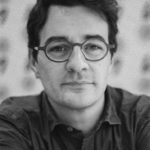Link to Pubmed [PMID] – 32484459
Link to DOI – 10.1172/JCI136223136223
J. Clin. Invest. 2020 Jul; 130(7): 3353-3360
Cryptococcus neoformans is an opportunistic yeast that is present worldwide and interacts with various organisms. In humans, it is responsible for cryptococcosis, a deadly invasive fungal infection that represents around 220,000 cases per year worldwide. Starting from the natural history of the disease in humans, there is accumulating evidence on the capacity of this organism to enter dormancy. In response to the harsh host environment, the yeast is able to adapt dramatically and escape the vigilance of the host’s immune cells to survive. Indeed, the yeast exposed to the host takes on pleiotropic phenotypes, enabling the generation of populations in heterogeneous states, including dormancy, to eventually survive at low metabolic cost and revive in favorable conditions. The concept of dormancy has been validated in C. neoformans from both epidemiological and genotyping data, and more recently from the biological point of view with the characterization of dormancy through the description of viable but nonculturable cells.
